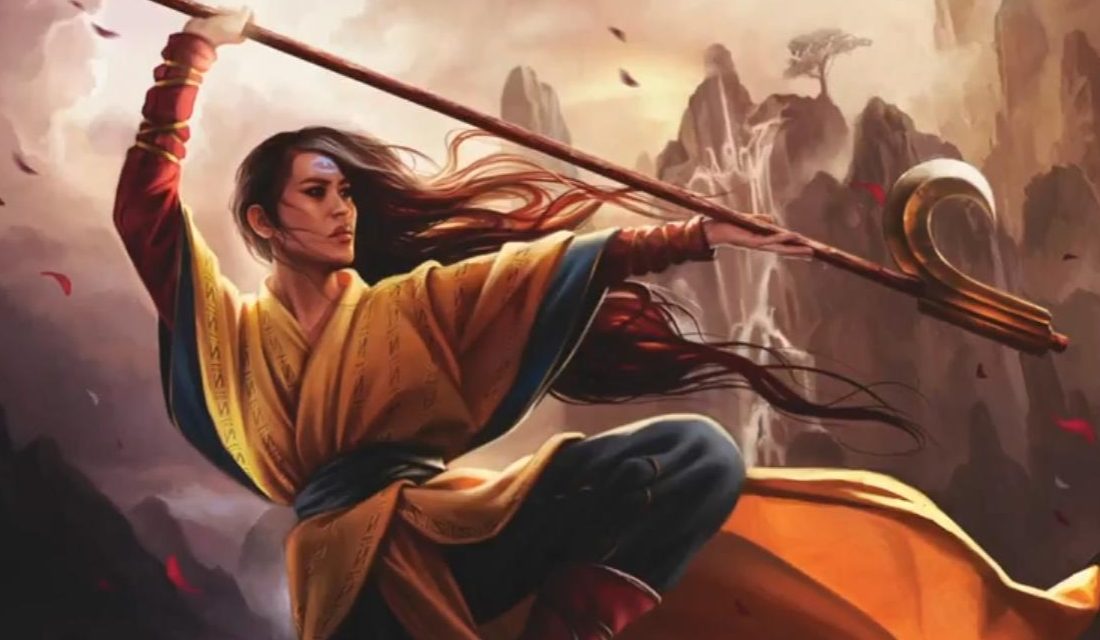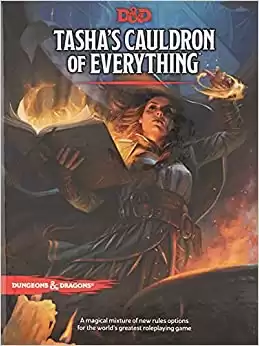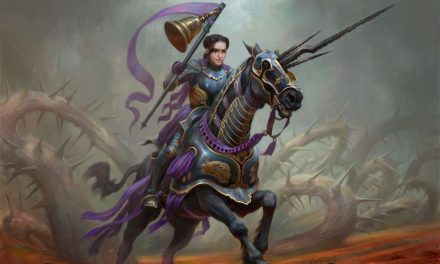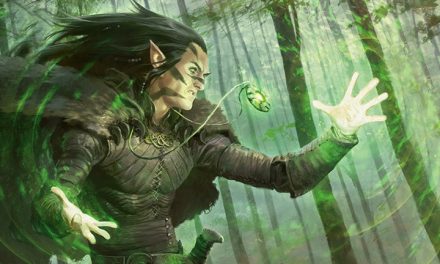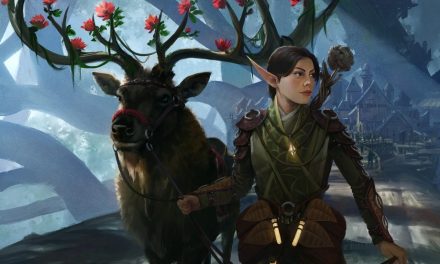Monks are quite possibly the most captivating class in D&D 5e. Not only are they mechanically powerful, but they just bring so much extra style to combat.
Pulling inspiration from the greatest kung fu films, playing a Monk gives you an opportunity to be the next Bruce Lee, Jackie Chan, Michelle Yeoh, or other martial arts star!
Combining a mastery of both the body and mind, Monks are seriously cool.
In this in-depth guide, we’re going over the Monk class in D&D 5e. You’ll see all of the Monk’s features and options as well as get tons of tips for optimizing your character.
So, empty your mind, find your center, and let the training begin!
This is the Ultimate Class Guide to the Monk in D&D 5e!
Monk Class Guide for D&D 5e
Monks are one of the most unique classes in D&D 5e.
Some are agile strikers who defy what others believe to be physically possible with their feats of endurance and dexterity.
Others turn their training inwards and prioritize mental discipline. Harnessing their energy (or ki), these Monks can heal or harm others, control the elements around them, or summon extra limbs to help them slap enemies senseless.
Most combine a mix of the two in varying measures.
Taking an active role on the party’s front lines, Monks are strikers who hit fast and hard. With their incredible speed, they’re able to outmaneuver nearly any enemy who stands in their way!
As they seek perfection in both their body and mind, Monks can be built in many unique and interesting ways depending on your playstyle and your vision for the character.
Between the various Monastic Traditions (i.e. Monk subclasses), incredible physical skills, and ways to harness your ki energy, you’ve got a ton of exciting options for building your Monk!
But we’ll get to all of that later in this guide. First things first, we need to look at what all Monks have in common.
You can find the Monk class on page 76 of the Player’s Handbook.
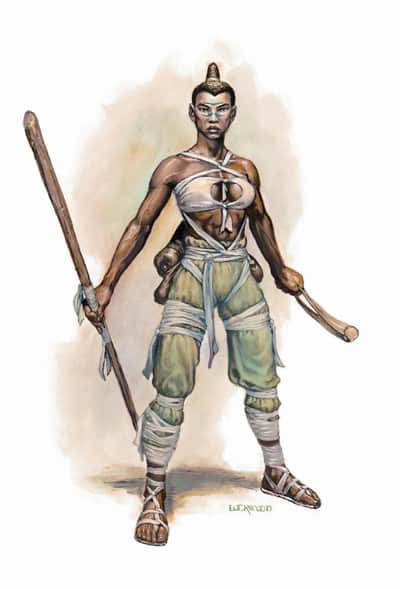
The Monk Table
You will want to be mindful of the Monk Table as you level up. This shows the features you gain at each level as well as other important things that you need to know for playing your Monk.
To keep it from being overwhelming in this guide, I’ve split the Monk Table up a bit.
Here you will see your proficiency bonus, features gained, and movement bonus at each level.
When we cover the Martial Arts and Ki features in just a moment, I’ll include the rest of the information on tables specifically covering those features.
| Level | Proficiency Bonus | Features | Unarmored Movement |
| 1 | +2 | Unarmored Defense, Martial Arts | – |
| 2 | +2 | Ki, Unarmored Movement | + 10 feet |
| 3 | +2 | Monastic Tradition, Deflect Missiles | + 10 feet |
| 4 | +2 | Ability Score Improvement, Slow Fall | + 10 feet |
| 5 | +3 | Extra Attack, Stunning Strike | + 10 feet |
| 6 | +3 | Ki-Empowered Strikes, Monastic Tradition Feature | + 15 feet |
| 7 | +3 | Evasion, Stillness of Mind | + 15 feet |
| 8 | +3 | Ability Score Improvement | + 15 feet |
| 9 | +4 | Unarmored Movement Improvement | + 15 feet |
| 10 | +4 | Purity of Body | + 20 feet |
| 11 | +4 | Monastic Tradition Feature | + 20 feet |
| 12 | +4 | Ability Score Improvement | + 20 feet |
| 13 | +5 | Tongue of the Sun and Moon | + 20 feet |
| 14 | +5 | Diamond Soul | + 25 feet |
| 15 | +5 | Timeless Body | + 25 feet |
| 16 | +5 | Ability Score Improvement | + 25 feet |
| 17 | +6 | Monastic Tradition Feature | + 25 feet |
| 18 | +6 | Empty Body | + 30 feet |
| 19 | +6 | Ability Score Improvement | + 30 feet |
| 20 | +6 | Perfect Self | + 30 feet |
Monk Class Features
So, let’s begin with the features that all Monks have in common. If you’re making a Monk character, these are the features that they will be starting with.
Hit Points
Monk Hit Dice: 1d8 per Monk level
Hit Points at Level 1: 8 + your Constitution modifier
Hit Points at Higher Levels: 1d8 (average of 5) + your Constitution modifier per Monk level beyond 1st
Proficiencies
Armor: None
Weapons: Simple Weapons, Shortswords
Tools: Choose one type of Artisan’s Tools or one Musical Instrument
Saving Throws: Strength, Dexterity
Skills: Choose two skills from Acrobatics, Athletics, History, Insight, Religion, and Stealth
Monk Starting Equipment
In addition to the equipment you receive from your background, you start with the following equipment:
- A shortsword OR any simple weapon
- 10 darts
- An Explorer’s Pack OR a Dungeoneer’s Pack

Unarmored Defense (Level 1)
Armor? Who needs it?!
Monks are capable of incredible feats of dexterity that seem to defy the laws of physics. Being so nimble means that they don’t need to wear armor to be hard to hit!
While wearing no armor and not wielding a shield, your AC equals 10 + your Dexterity modifier + your Wisdom modifier.
Wisdom is already a very important ability score for Monks since it powers many of their key features.
Or should I say “ki features”?
Bad jokes aside, this gives you even more reason to invest heavily in your Wisdom ability score.
Let’s say you’ve got a score of 18 in Dexterity (a +4 bonus) and 16 in Wisdom (a +3 bonus). With the Monk’s Unarmored Defense feature, that gives you an Armor Class of 17!
Not too shabby!
Related: Armor Class in D&D 5e Explained
Martial Arts (Level 1)
Monks’ whole thing is their dedication to the martial arts as a way of mastering both their body and mind.
Where most people wouldn’t dare enter combat without a weapon, Monks have no such need. They hit hard and fast!
However, Monks still train with certain weapons. In the hands of a Monk, something as simple as a quarterstaff, club, or a shortsword becomes remarkably lethal!
I have another article that fully covers Monk Weapons that I recommend you check out!
But back to the Martial Arts feature…
If you aren’t wearing armor or wielding a shield, you gain several benefits reflecting your Martial Arts training. Additionally, you must be unarmed or wielding only Monk Weapons.
You can use Dexterity instead of Strength for your attack and damage rolls for your unarmed strikes and Monk Weapons.
Monks already need to focus on their Dexterity, Wisdom, and Constitution scores. This will lessen how much you need to invest in your Strength score.
You can roll a d4 in place of the normal damage of your unarmed strike or Monk Weapon. This die changes as you gain Monk levels.
You hit harder than most people. As you continue to gain levels in the Monk class, your Martial Arts die will increase. The Martial Arts die determines what damage dice you roll for your unarmed strikes and Monk Weapon attacks.
The table below will show you which die is used at each level.
| Monk Level | Martial Arts Die |
| 1 – 4 | 1d4 |
| 5 – 10 | 1d6 |
| 11 – 16 | 1d8 |
| 17 + | 1d10 |
When you use the Attack action with an unarmed strike or a Monk weapon on your turn, you can make one unarmed strike as a bonus action.
More attacks are always nice to have!
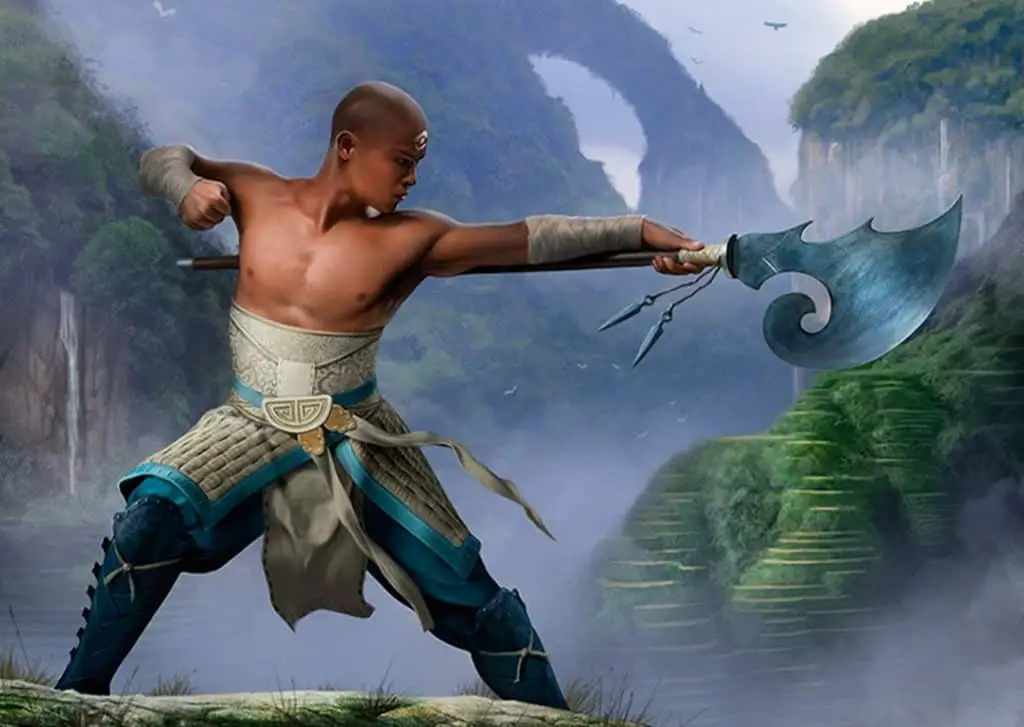
Ki (Level 2)
Starting at level 2, you have a pool of resources called ki points. You have a number of these equal to your Monk level and they recharge on a short or long rest. At least 30 minutes of that rest must be spent in meditation.
These ki points are used to power your various features. You know three ki features to start with but will learn more as you level up.
The three ki features you gain at level 2 are:
Flurry of Blows: Immediately after you take the Attack action on your turn, you can spend 1 ki points to make two unarmed strikes as a bonus action.
Patient Defense: Spend 1 ki point to take the Dodge action as a bonus action on your turn.
Step of the Wind: Spend 1 ki point to take the Disengage or Dash action as a bonus action on your turn. Additionally, your jump distance is doubled for the turn.
Flurry of Blows will be your go-to in most situations. Monks may not hit as hard as other classes with a single attack, but they hit a lot!
Getting more attacks means more chances to hit (possibly even a critical hit!)
The other two features are slightly more situational. Step of the Wind is great when you need to make a quick getaway or leap over a bottomless chasm of doom.
As an unarmored combatant on the front line, enemies might prioritize you if they think you’ll go down easily. Patient Defense gives them disadvantage on those attacks as you nimbly dodge their attacks!
Some of your later ki features will require the enemy to make a saving throw. The save DC against your ki features is calculated as:
Ki Save DC = 8 + your proficiency bonus + your Wisdom modifier
Unarmored Movement (Level 2)
Monks are all about being quick and nimble. When they aren’t wearing armor or wielding a shield, they get some great improvement to their movement!
When you gain this feature at level 2, you get an extra 10 feet of movement speed. As you level up, this bonus movement speed will increase.
| Monk Level | Unarmored Movement |
| 2 – 5 | + 10 ft |
| 6 – 9 | + 15 ft |
| 10 – 13 | + 20 ft |
| 14 – 17 | + 25 ft |
| 18 + | + 30 ft |
Don’t get me wrong, this is seriously cool!
But it really shines once you hit level 9!
At level 9, Unarmored Movement lets you move along vertical surfaces and across liquids on your turn without falling during the move.
So, let’s say you’re a human (so a normal 30 feet movement speed) and are a level 10 Monk (which gives you an extra 20 feet of movement).
That means you’ve got 50 feet of movement. If you take the Dash action, you double that to 100 feet.
That means you can effortlessly scale a 100-foot cliff or run across the surface of a river to the other bank up to 100 feet away.
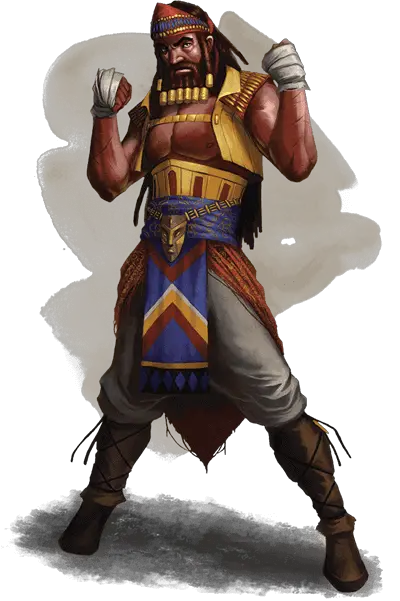
Monastic Tradition (Level 3)
Even in the first two levels, nobody is going to doubt how lethal your fists are.
But at level 3 you specialize by choosing a subclass and dedicate yourself fully to mastering this Monastic Tradition.
Currently, there are 10 officially published Monastic Traditions to choose from. Each of these has new features that you can learn to crush your enemies and discipline your mind.
| Book | Monastic Traditions |
| Player’s Handbook | Four Elements, Open Hand, Shadow |
| Sword Coast Adventurer’s Guide | Long Death |
| Xanathar’s Guide to Everything | Drunken Master, Kensei, Sun Soul |
| Tasha’s Cauldron of Everything | Astral Self, Mercy |
| Fizban’s Treasury of Dragons | Ascendant Dragon |
We’ll go over these Monastic Traditions in more detail in the Subclasses section of this guide.
Deflect Missiles (Level 3)
Starting at level 3, the Monk can deflect enemies’ ranged attacks. In many cases, they can even throw the arrow, bolt, or rock right back at the person who launched it at them!
When you’re hit by a ranged attack, you can use your reaction to deflect or catch the missile. When you do so, the damage you take from the attack is reduced by 1d10 + your Dexterity modifier + your Monk level.
This is already fantastic.
Because it uses your reaction, you can only do this once between your turns but that should be plenty. Your high Armor Class from your Unarmored Defense makes you hard to hit.
If they do manage to hit you with a ranged attack, you can use this to deflect it!
But this feature gets even better!
If you reduce the damage to 0, you can catch the missile if it is small enough for you to hold in one hand and you have at least one hand free.
When you catch a missile this way, you can spend 1 ki point to make a ranged attack with the weapon or ammunition you just caught as part of the same reaction.
You make this attack with proficiency regardless of your weapon proficiencies, and the missile counts as a Monk Weapon for the attack. The attack has a normal range of 20 feet and a long range of 60 feet.
Not only does your enemies’ attack not hit, but you can completely turn it around on them!
The size requirement of this feature is pretty self-explanatory. Deflect Missiles works against most ranged attacks, but it won’t work as well if a Stone Giant hits you with a boulder that’s three times your size!
Master the Technique: Deflect Missiles in D&D 5e Explained!
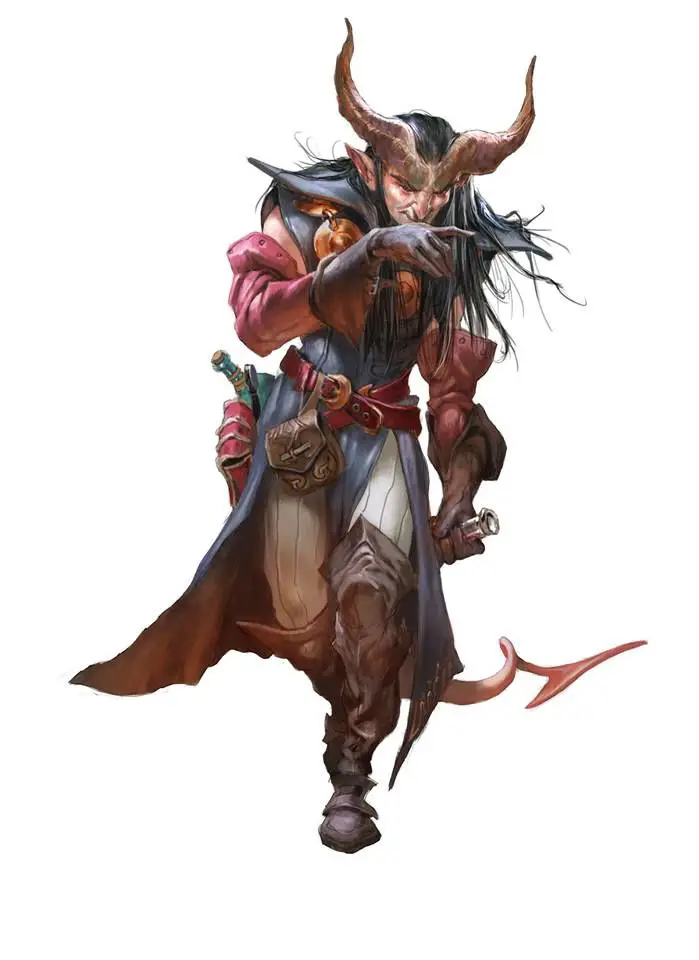
Slow Fall (Level 4)
Of all the dangers adventurers face, large falls are one that it’s always wise to be especially mindful of. Fortunately, Monks have the dexterity to handle such falls better than most!
With the Slow Fall feature, you can use your reaction when you fall to reduce any falling damage you take by an amount equal to five times your Monk level.
Hopefully, you won’t be using this often, but you’ll be VERY glad to have it when you need it! For the low cost of a reaction and how well this feature scales, it’s great to have.
Related: Falling in Damage in 5e Explained
Extra Attack (Level 5)
Like most martial classes, Monks get the ability to make another attack on their turn at level 5.
Beginning at level 5, you can attack twice instead of once whenever you take the Attack action on your turn.
I don’t need to explain why this is good. There’s not exactly a downside to being able to make more attacks!
Though I do have a full guide to the Extra Attack feature that will help you learn the ins and outs.
Mix this with your Flurry of Blows as a bonus action to overwhelm your enemies with four attacks per turn!
Stunning Strike (Level 5)
There are a lot of great reasons to play a Monk in D&D 5e, but Stunning Strike just might be the biggest reason.
This is mind-numbingly good. Some have even claimed that getting a feature this strong at such a low level is broken or overpowered.
While I think that’s going too far, there’s no debating just how amazing Stunning Strike is.
When you hit another creature with a melee weapon attack, you can spend 1 ki point to attempt a stunning strike. The target must succeed on a Constitution saving throw or be stunned until the end of your next turn.
Remember that a creature that is stunned is incapacitated, can’t move, and automatically fails Strength and Dexterity saving throws.
Even better: attack rolls against a stunned creature have advantage.
So, let’s say you hit the creature with your first attack. Spending a ki point to make it a Stunning Strike means that your next three attacks (with Flurry of Blows) will all be at advantage if they fail their Constitution save.
Furthermore, they’re stunned until the end of your next turn. This means all your allies are also getting advantage on their attacks against the creature. Plus, you’ll still have advantage on all of your attacks against them on your next turn.
That is an entire world of hurt getting dropped on the creature if they can’t pass their Constitution save.
Being able to lock down an enemy (especially a boss encounter) for the cost of 1 ki point is nothing short of amazing.
This won’t work as well on enemies with high Constitution scores (like Giants), but you’ll have more than enough instances where this is useful.
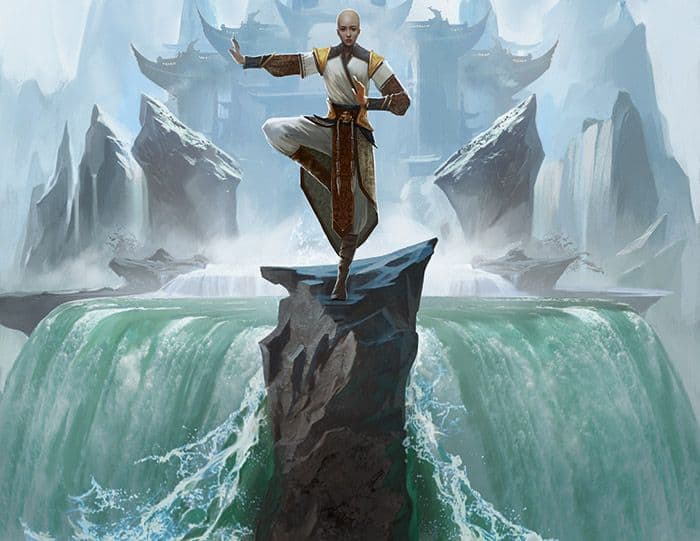
Ki-Empowered Strikes (Level 6)
Do you want to punch ghosts?
Because now you can punch ghosts.
Your unarmed strikes count as magical for the purpose of overcoming resistance and immunity to nonmagical attacks and damage.
Incorporeal creatures like ghosts and specters are the most common enemies that resist nonmagical damage. However, there are plenty of other non-spectral enemies like Night Hags, lycanthropes, and Rakshasas with this same resistance.
If you or your party haven’t acquired magic weapons, fights against these enemies become incredibly deadly.
Thankfully, you have learned to use your ki to make your attacks count as magical in these situations!
Evasion (Level 7)
Monks are all about speed and precision. At level 7, your reflexes are one of your most dependable assets!
Even in the chaos being caused by a large AoE spell or a dragon’s breath attack, Monks are excellent at minimizing the damage they take or avoiding it altogether!
When you are subjected to an effect that allows you to make a Dexterity saving throw to take only half damage, you instead take no damage if you succeed on the saving throw and only half damage if you fail.
AoE effects typically hurt a lot and most AoE effects that cause damage will require a Dexterity saving throw. Think spells like Fireball or Lightning Bolt as well as dragons’ breath attacks.
But this also works with certain traps.
Let’s say that a trap would launch a series of poison darts at you in such a way that even succeeding on the save will require you to take some damage.
With Evasion, you can completely dodge all of them! Even if you fail the saving throw, you’ll only be taking half of the damage!
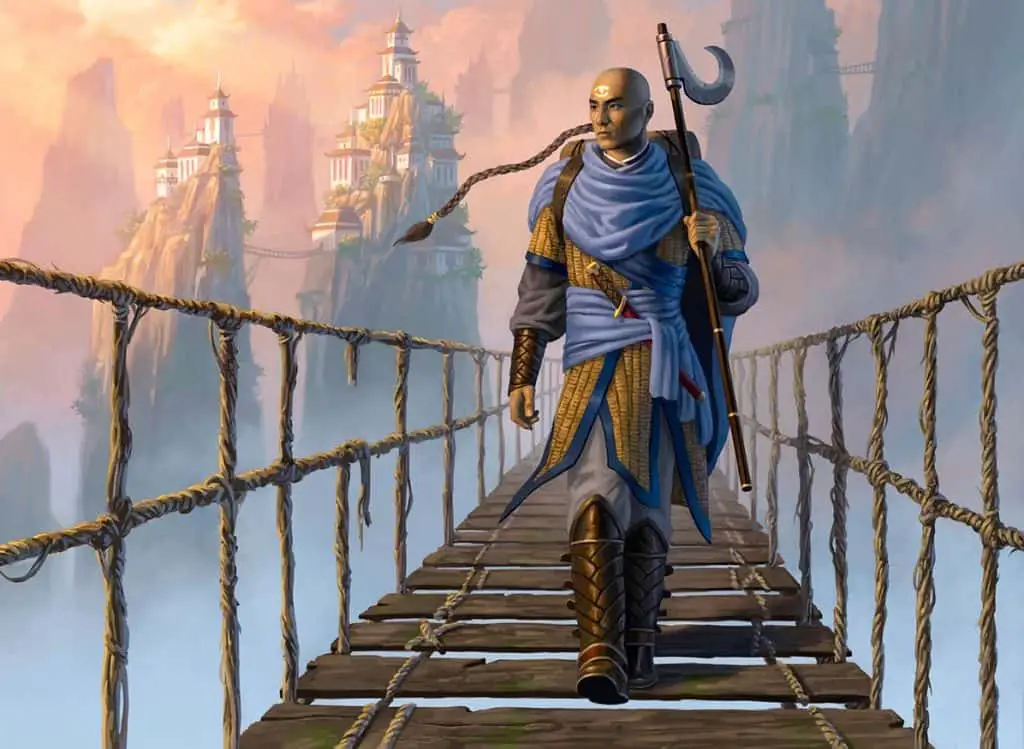
Stillness of Mind (Level 7)
It can be easy to lose your focus in combat. That’s made even tougher considering the large number of creatures that like to twist your mind with charms or fear effects.
However, Monks train and meditate in intense conditions for exactly this reason. Taking a moment to calm your mind will help you shrug off such effects!
You can use your action to end one effect on yourself that is causing you to be charmed or frightened.
Especially considering the role that the Monk serves in the party, being charmed or frightened can be incredibly bad.
Sure, this will cost you an action but it’s a dependable way of getting over an enemy’s mind games!
Related: Conditions in D&D 5e
Purity of Body (Level 10)
Ok, so it’s probably still a good idea to eat your veggies. But now your control of your ki allows you to easily overcome diseases and poisons!
You are immune to disease and poison.
Disease tends to be less common in most D&D games, but it can be devastating when it is there.
However, poisons are very common. There is no shortage of creatures that deal poison damage and many of the poisons in the mid and high levels are outright disgusting.
As a very handy passive feature, make sure that you don’t forget you have this!
Tongue of the Sun and Moon (Level 13)
Your mastery of your ki extends to other creatures. As long as a creature can understand a language or communicates with a spoken language, you won’t have to worry about language barriers.
You understand all spoken languages. Furthermore, any creature that can understand a language can understand what you say.
While spells like Tongues and Comprehend Languages are classic ways to deal with language barriers, having this feature negates the need for spending spell resources. You will probably have to play interpreter on occasion, but that’s a very small price to pay.
That said, you probably aren’t geared to work as the party’s face. Monks tend to have to juggle several ability scores and Charisma is a common dump stat for most.
But if your party’s face needs an interpreter, you’re now perfect for the job!
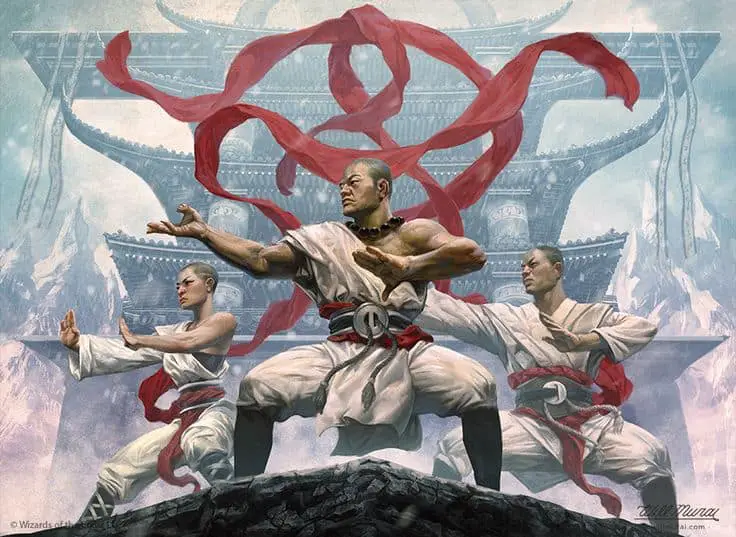
Diamond Soul (Level 14)
You know that feeling when the DM asks you to make a saving throw and you think “Alright! I’m great at those!”?
How would you like to have that feeling every time?
Get ready because your Monk’s survivability is about to go through the roof!
You gain proficiency in all saving throws.
Additionally, whenever you make a saving throw and fail, you can spend 1 ki point to reroll it and take the second result.
Even if this was limited to the first effect, it would be great. But being able to spend a ki point to reroll a failed saving throw is simply fantastic.
Considering how high the stakes tend to be with saving throws in the tier of play that you gain this, it’s an exceptional feature!
But perhaps the greatest use of this is that it also applies to Death Saving Throws. At level 14, you’ve got a +5 proficiency bonus that will get bumped up to +6 at level 17.
That means that a roll of your d20 for Death Saves is a success on anything 5 or greater (or 4 or greater when you hit level 17.)
Worst case: you spend a ki point and reroll.
It’s absolutely worth it.
Timeless Body (Level 15)
Your ability to push the limits of your body has reached new heights. Not only do you defy the need for food and water, but you are also spared from the natural ravages of time!
You do not suffer any penalties due to old age and you cannot be aged magically. Though you can still die of old age.
Additionally, you no longer need food and water.
This is a fun feature but it’s mostly cosmetic at this point. Still, it might come in handy in certain encounters or otherwise perilous situations.
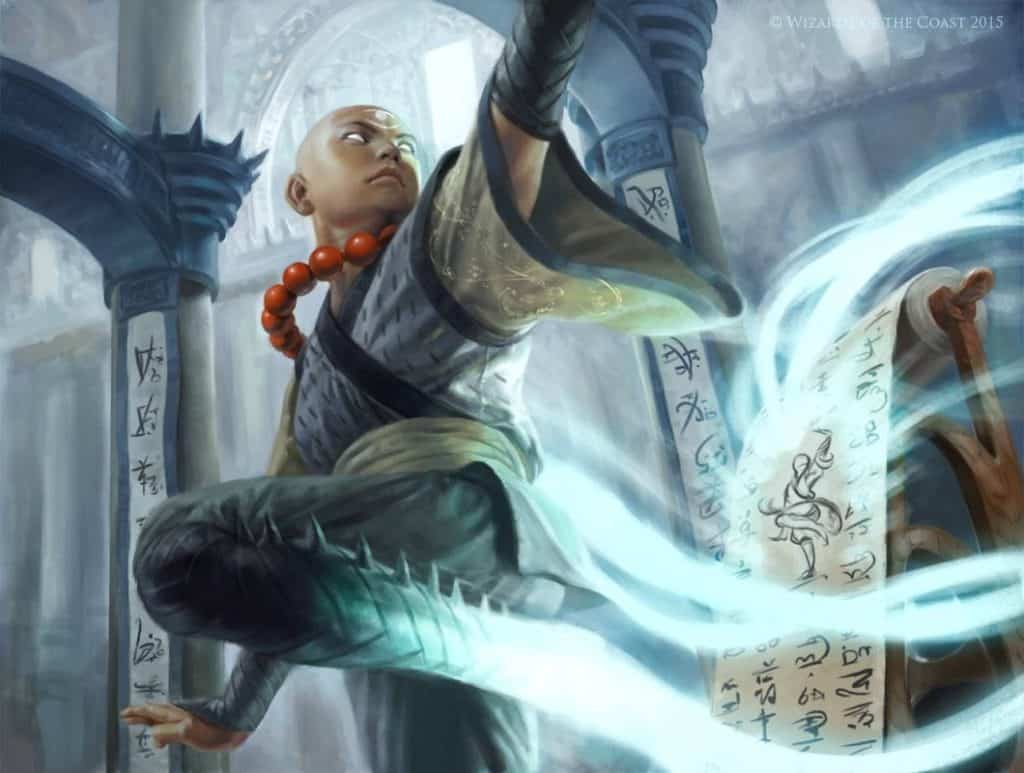
Empty Body (Level 18)
Harnessing the raw energy within yourself, your ki abilities get even more impressive.
By grasping the bond between the energy and the physical self, you’re even able to transcend your physical limitations.
You can use your action to spend 4 ki points to become invisible for 1 minute.
During that time, you also have resistance to all damage but force damage.
Additionally, you can spend 8 ki points to cast the astral projection spell without needing material components. When you do so, you can’t take any other creatures with you.
Invisibility is always great. Full stop.
It’s worth noting that this invisibility does not end when you attack. As long as your enemies can’t see you, that means you’re going to have advantage on all of your attacks against them.
They’ll literally never see what hit them!
The Astral Projection aspect of this feature works best as a plot point, to be honest. Exploring the Astral Plane is fun, but you would need to work with your DM to find a reason for going there.
Tying this feature in with the story can lead to some very cool moments though. Perhaps it sees you ascending to contact some entity who is guiding you and your party towards the greater goal in the campaign?
Perfect Self (Level 20)
Your level 20 capstone feature is Perfect Self. It’s a simple passive feature with some major and exponential effects.
The simple truth is that you can’t always get a short rest in between fights. Starting a combat encounter with no ki points is awkward, but those days are long gone now!
When you roll for initiative and have no ki points remaining, you regain 4 ki points.
By the time you’ve reached level 20, you’ve certainly gotten very good at managing your ki points. It’s your most important resource and you have to learn when to push and when to hold back.
Used wisely, 4 ki points is enough to still get you through most combat encounters. While it may not be ideal, it’s much better than nothing!
This will keep you in the fight until your party can find a place to take a quick short rest and let you recover all of your ki points.
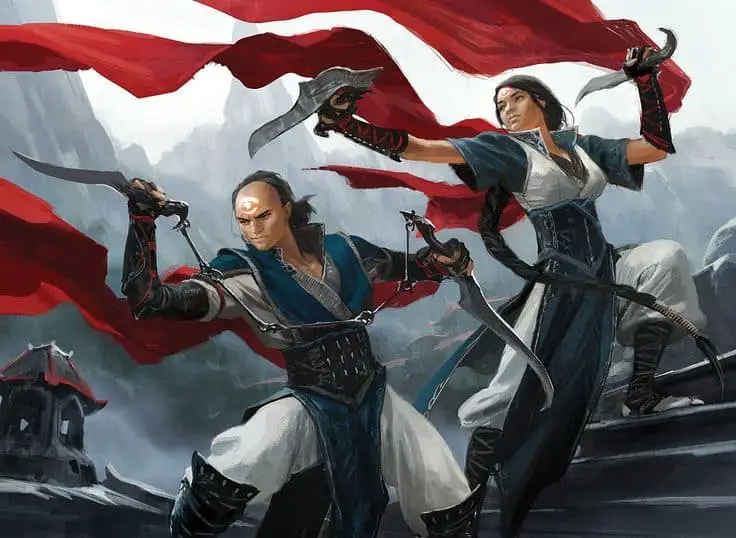
Optional Class Features for Monks from Tasha’s Cauldron
Monks gained a lot of new features in Tasha’s Cauldron of Everything. These are optional, but they add a lot to the experience of playing a Monk.
Check with your DM to make sure that they’re cool with using content from TCoE in your game. (They probably won’t have a problem with it but going over what books can be used is an important part of a good Session Zero!)
Dedicated Weapon (Level 2)
The Dedicated Weapon feature expands your options for monk weapons. Specifically, you can now focus your ki on a weapon during a rest to treat the weapon as a Monk weapon.
Whenever you finish a short or long rest, you can touch one weapon and focus your ki on it. That weapon then counts as a monk weapon for you until you use this feature again.
Keep in mind that this doesn’t work with just any weapon, though.
Your chosen weapon must fit certain criteria to be a Dedicated Weapon.
- The weapon must be a simple or martial weapon.
- You must be proficient with it.
- It must lack the heavy and special properties.
The issue here is that you also need to acquire proficiency with the weapon that you choose.
You’ll most likely get your chosen weapon proficiency from your race, but could also get it from taking a feat or multiclassing.
Longswords are the tried-and-true option. It’s an easy weapon to get proficiency with and deals reliable damage.
But don’t ignore whips. Remember that monk weapons use your martial arts die and whips give you some excellent reach!
Since Monks tend to have difficulty when it comes to ranged attacks, it might also be worth it to pick a shortbow as your Dedicated Weapon just in case.
Ki-Fueled Attack (Level 3)
Sometimes you need to use your action for something other than attacking. If that “something” requires a ki point, you’ll still be able to make an attack with your bonus action.
If you spend 1 ki point or more as part of your action on your turn, you can make one attack with an unarmed strike or monk weapon as a bonus action before the end of the turn.
This serves the purpose of smoothing out your action economy.
Outside of your Martial Arts feature, you typically won’t have a lot of use for your bonus action. Ki-Fueled Attack makes sure that you’re taking full advantage of your turn.
For example, a Four Elements Monk would have to decide if its better to cast a spell or make melee attacks. With Ki-Fueled Attack, they can now cast a spell and get in a quick hit to hopefully finish off whoever is left standing.
Most of the Monk subclasses won’t have a lot of use for this, but it does help some of them flow a bit better.
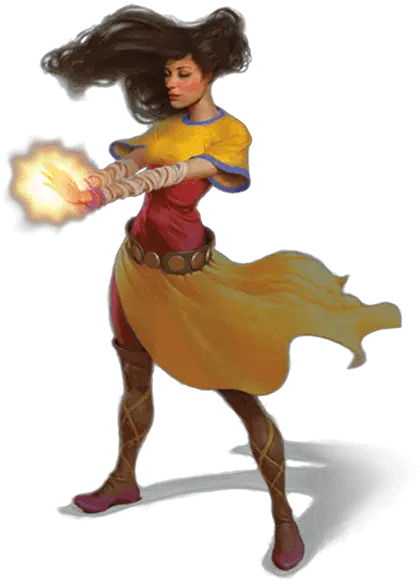
Quickened Healing (Level 4)
Monks don’t have as many hit points as other front-line classes. That means keeping your hit points in tip-top shape is even more important!
As an action, you can spend 2 ki points and roll a Martial Arts die. You regain a number of hit points equal to the number rolled plus your proficiency bonus.
In a pinch, this could be useful in combat, but it’s best used right before you take a short rest.
Because you regain all your ki points at the end of a short rest, dumping any of your remaining ki points into some hp recovery will help you better conserve your Hit Dice.
Related: Hit Dice in D&D 5e Explained
Focused Aim (Level 5)
The final optional class feature for Monks from Tasha’s Cauldron of Everything is meant to give your attacks that extra little push when it matters most.
When you miss with an attack roll, you can spend 1 to 3 ki points to increase your attack roll by 2 for each of these ki points you spend, potentially turning the miss into a hit.
Keep in mind that Monks don’t hit particularly hard. Instead, they hit a lot.
This makes situations where you’ll really benefit from using Focused Aim few and far between. Unless an enemy is about to escape and you’re reasonably sure they’ve only got a precious few hit points left, you probably won’t have much reason to bust this out.
Not to mention, the ki cost greatly outweighs the benefits here in all but the most desperate situations.
The Monk’s Role in the Party
Monks are capable of filling several important roles within a party. However, they naturally favor roles where their speed and overall awareness are best used.
However, there are some roles that Monks tend to fill more often than others.
- Skirmisher: Swooping in to hit fast and overwhelm enemies is what the Monk class is all about. They’re at their best when they can bob and weave around enemies in a short combat encounter. Longer, drawn-out combats can be problematic for Monks.
- Scouting: Monks are quick and observant enough that they can make for excellent scouts when the party needs a bit of recon.
- Cleanup: Monks don’t hit hard but they do hit often. Prioritizing enemies that are weak or weakened means that a Monk can take several smaller threats off the board. Look for ways to clear a path to the biggest threat for your heaviest hitters.
Depending on your build and party composition, your Monk might fill other additional roles in the party. However, these are the big three for most Monks.
Monk Subclasses
So, we’ve mentioned several of the Monastic Traditions by this point, so now is a great time to look at your subclass options.
You choose your Monk’s Monastic Tradition at level 3.
The features granted to you by your chosen Tradition help you focus on specific roles within the party. Many of these features enhance existing Monk abilities while also providing them with new ones.
It helps if you “work backward” when deciding what kind of Monk you want to play. Figure out what you want your character to do and what role they can fill first. You’ll have a much easier time figuring out what subclass to choose that way!
Of course, I have my own thoughts on how each of the Monk subclasses ranks, but the best Monk is the one that YOU want to play.
So, let’s quickly look over each of your Monastic Tradition options. I’ll include a link to each of the Monk subclass guides in each section.
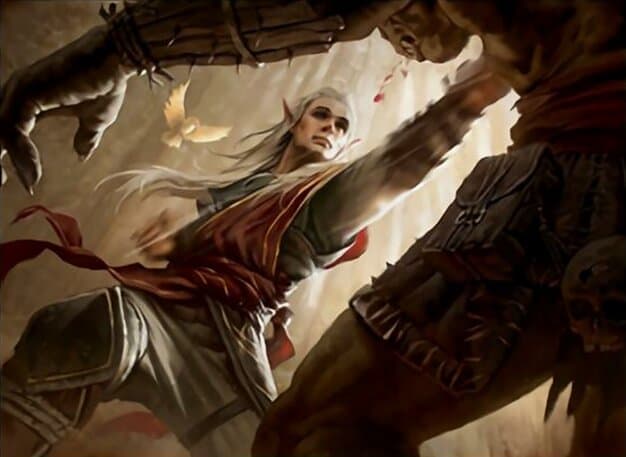
Way of the Open Hand
In many ways, the Way of the Open Hand is what immediately comes to mind when people think about Monks in D&D 5e. It’s that iconic and it’s that powerful!
But these Monks are anything but basic. They’ve got a wide and balanced suite of features to help them take over the battlefield in combat.
- Open Hand Technique: Buff your Flurry of Blows with the ability to knock enemies down, push them up to 15 feet away, or stop them from taking reactions until the end of your next turn.
- Wholeness of Body: Regain hit points equal to three times your Monk level as an action.
- Tranquility: Gain the effects of the Sanctuary spell until your next long rest or you attack, cast a spell, or deal damage to another creature. This means enemies have to succeed on a Wisdom saving throw to attack or cast a spell at you.
- Quivering Palm: Create imperceptible vibrations in a creature’s body that last for a number of days equal to your Monk level. You can end the effect whenever you would like to instantly drop them to zero hit points or deal some huge necrotic damage to them.
Master your form and flow with the full guide to the Open Hand Monk!
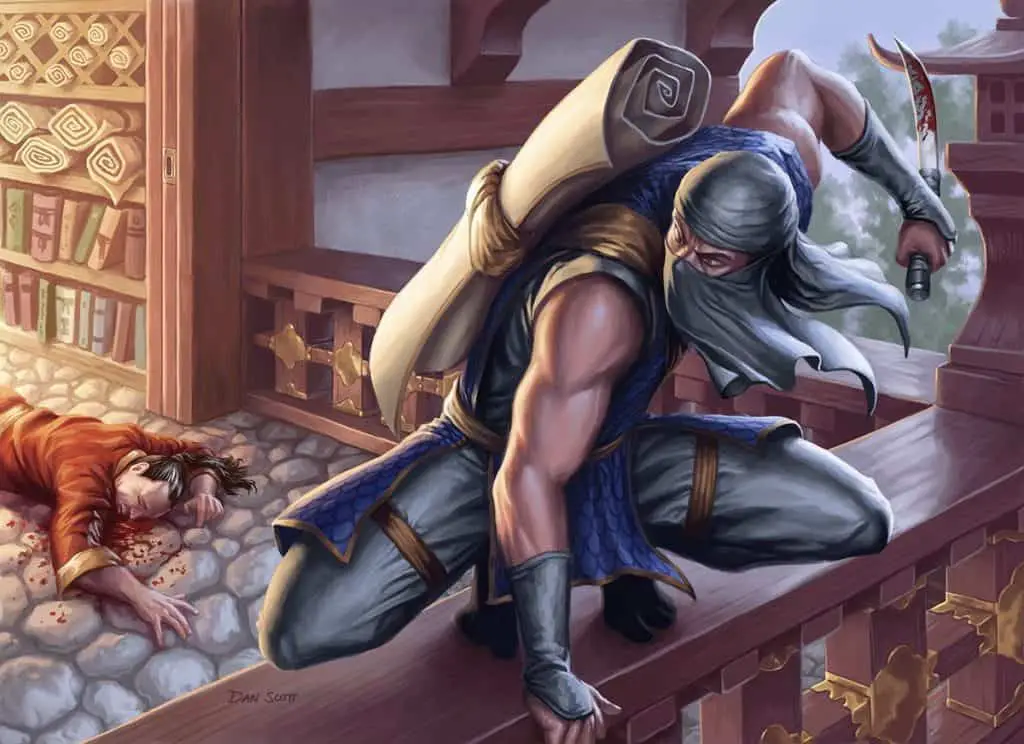
Way of Shadow
Spies, assassins, and ninjas are among the most well-known students of the Way of Shadow. Emphasizing stealth, misdirection, and taking enemies by surprise, this is the most elusive of the Monastic Traditions.
In fact, the techniques taught by the Way of Shadow are often kept as closely-guarded family secrets!
Even beyond assassinations, Shadow Monks make for excellent scouts and spies. Their ability to do recon work and silently deal with anyone who gets in their way is legendary!
If someone believes that a Shadow Monk is coming after them, they will never have a good night’s sleep again.
- Shadow Arts: Learn spells and illusions to help you pass unnoticed.
- Shadow Step: Teleport between shadows and gain advantage on your first attack after doing so.
- Cloak of Shadows: Turn invisible for free until you attack, cast a spell, or enter bright light.
- Opportunist: Gain an extra attack against a nearby creature when they get hit by one of your allies.
Get the jump on your enemies with the full guide to the Way of Shadow Monk!
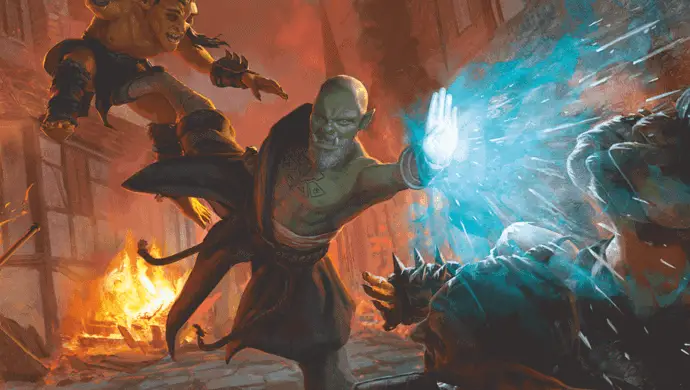
Way of the Four Elements
The Way of the Four Elements Monk has learned to use their ki to control the elements around them.
Harnessing the powers of earth, fire, wind, and water, these Monks call upon the elements to assist their already impressive martial arts talent.
You can think of the Four Elements Monk as a type of hybrid between a Monk and a spellcaster. While they only gain one feature, they have a large list of elemental abilities to learn within that feature.
- Disciple of the Elements: Learn Elemental Disciplines that allow you to use your ki to cast spells. You gain more Elemental Disciplines as you level up.
Harness the elements with the full guide to the Way of the Four Elements Monk!
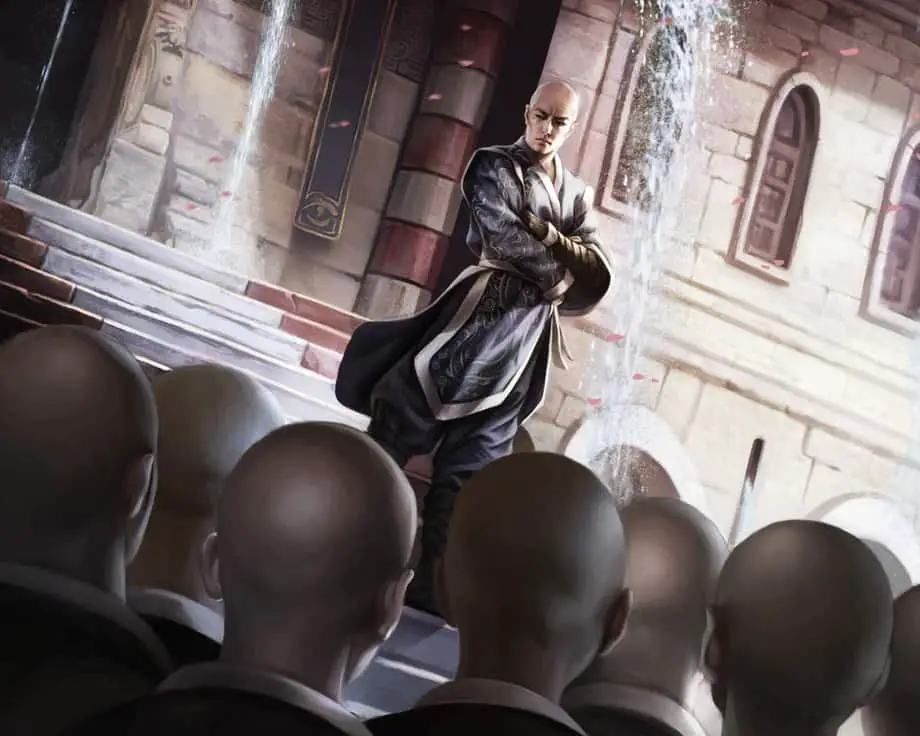
Way of the Long Death
While many people fear death, Way of the Long Death Monks seek to understand it. Having done that, they are able to harness it and seemingly defy the grave itself!
These Monks are incredibly tough and are infuriatingly difficult to drop. It can seem like no matter how much enemies are hitting them, they just won’t go down!
Students of the Way of the Long Death aren’t like most other Monks. While others are frequently zipping around the battlefield, these combatants have the toughness required to stand on the frontlines as a powerful wall between their enemies and allies.
- Touch of Death: Gain temporary hit points when you reduce a creature within 5 feet of you to zero hit points.
- Hour of Reaping: Frighten all creatures within 30 feet of you.
- Mastery of Death: When you are reduced to zero hit points, spend a ki point to drop to 1 hp instead.
- Touch of the Long Death: Touch a creature and spend up to 10 ki points. The target takes necrotic damage based on the number of ki points you spend.
Overcome the grave with the guide to the Way of the Long Death Monk!
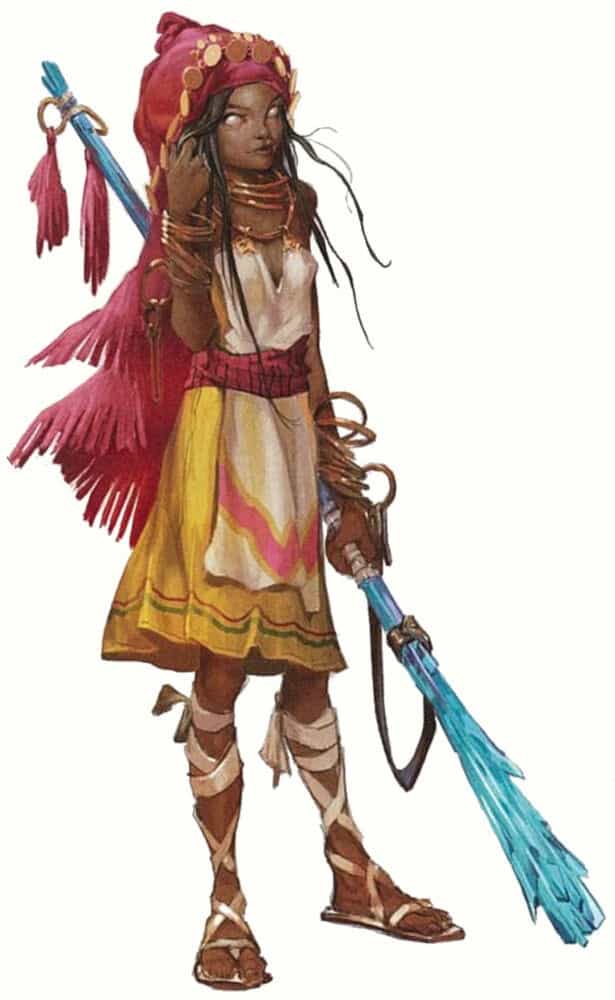
Way of the Sun Soul
Monks who follow the Way of the Sun Soul seek physical and spiritual perfection. They aim to be the light that shines in the darkness to drive back evil and protect the innocent.
The big draw to the Way of the Sun Soul is the ability to launch bright blasts of radiant energy at your foes. If you’ve ever seen Dragonball Z, you know exactly what I’m talking about!
- Radiant Sun Bolt: Launch blasts of radiant energy at your foes that scale with your Martial Arts die.
- Searing Arc Strike: Lash out with a cone of fire to deal with groups of enemies. Buff it further with your ki points if you need more damage!
- Searing Sunburst: Throw a burst of sunlight with a 20-foot radius of radiant damage. Spend more ki points to buff the damage.
- Sun Shield: Shed bright light from your body and deal extra radiant damage to enemies that hit you.
Shine bright with this full guide to the Way of the Sun Soul Monk!
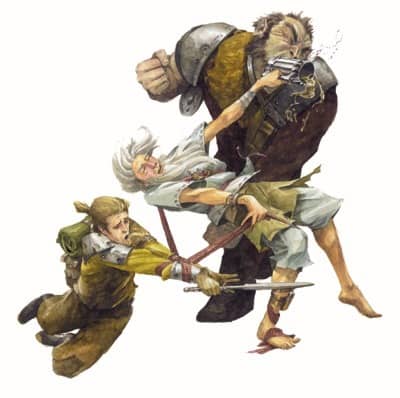
Way of the Drunken Master
Mixing the tumbling antics of a clown with the lethality of a martial arts master, we have the Way of the Drunken Master Monk.
While drinking isn’t a requirement of this Monastic Tradition, its movements and techniques are meant to deceive enemies into underestimating the Monk.
Jerking and swaying in unpredictable directions, the Drunken Master keeps enemies guessing while using the chaos they create to beat their enemies into the ground.
If you favor a defensive “hit and run” playstyle with some comedic flair, this might be for you!
- Bonus Proficiencies: Gain proficiency in the Performance skill and with Brewer’s Supplies.
- Drunken Technique: Using Flurry of Blows now also gives you the benefit of the Disengage action as well as increases your movement speed by 10 feet until the end of the current turn.
- Tipsy Sway: Leap to your feet by getting up from the prone position using only 5 feet of movement instead of half of your total. Additionally, spend ki points to make your enemies hit their own allies in combat instead of you!
- Drunkard’s Luck: Spend ki points to cancel disadvantage on your ability checks, saving throws, or attack rolls!
- Intoxicated Frenzy: Make up to an extra THREE attacks with your Flurry of Blows for a total of five attacks (in addition to your regular two attacks with your Action) against different enemies with one use.
Raise a glass with the full guide to the Drunken Master Monk!
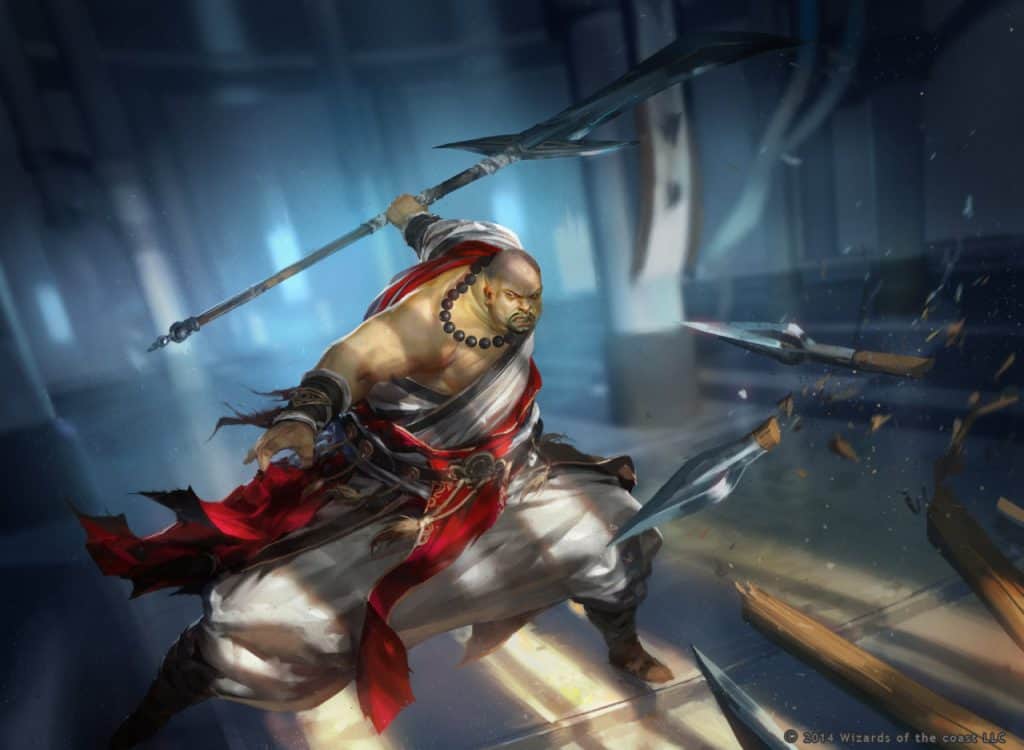
Way of the Kensei
Kensei Monks train endlessly with various weapons. Even beyond the lethal power that the weapons hold, these Monks see the grace and beauty within the forms they practice.
If done well, the weapon and its wielder become one.
There is no shortage of ways to build a Kensei Monk. They train diligently with a variety of weapons which means that the biggest question becomes how you want to put out damage.
In both close and long-range combat, Kensei Monks bring a mix of variety and expertise to the table.
- Kensei Weapons: Gain proficiency with one melee and one ranged weapon of your choice. These are now considered Monk Weapons for you.
- Agile Parry: Gain a bonus to your Armor Class by using your Kensei Weapon to parry the attack.
- Kensei’s Shot: Use your bonus action to deal extra damage with ranged attacks.
- Way of the Brush: Gain proficiency with calligraphy or painting supplies.
- One with the Blade: Kensei Weapons overcome resistance/immunity to nomagical damage. Spend ki points to make your weapon attacks deal more damage.
- Sharpen the Blade: Spend ki points to further increase attack and damage rolls with your Kensei Weapons.
- Unerring Accuracy: Once per turn, reroll a missed attack that was made using a Monk Weapon.
Steady your blade the full guide to the Way of the Kensei Monk!
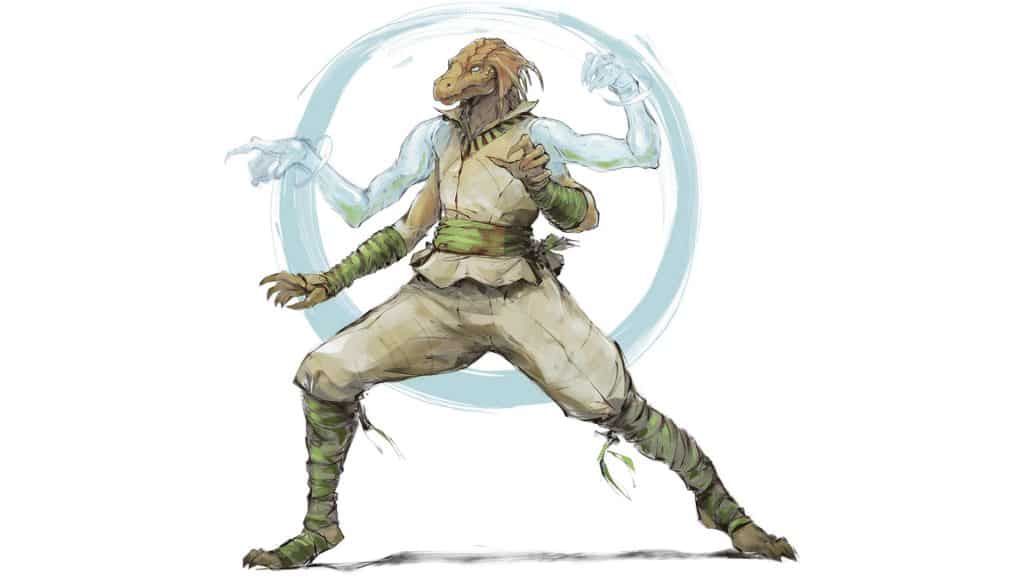
Way of the Astral Self
The Astral Self is the truest version of who someone really is. Through meditation and discipline, Way of the Astral Self Monks seek to unleash this version of themselves.
As they level up, these Monks are able to call forth more and more of this Astral Form. With each part that they summon, they gain even more incredible features.
By the time their full Astral Self is being awakened, they’re unleashing a ton of hard-hitting attacks and swatting away enemy attacks like it’s nothing.
For the anime fans out there, enjoy the Jojo’s Bizarre Adventure reference!
- Arms of the Astral Self: Summon spectral arms that grant increased reach and use your Wisdom modifier instead of Strength and Dexterity for attacks and Strength checks.
- Visage of the Astral Self: A spectral mask or helmet appears on you granting extraordinary sight/darkvision, advantage on Insight and Charisma checks, and hide/amplify your voice.
- Body of the Astral Self: Deflect incoming elemental attacks, deal extra damage with attacks made with your Astral Arms.
- Awakened Astral Self: Release your Astral Self’s true potential gaining a bonus to your Armor Class in addition to yet another attack made on your turn.
Unleash your true self with the full guide to the Way of the Astral Self Monk!
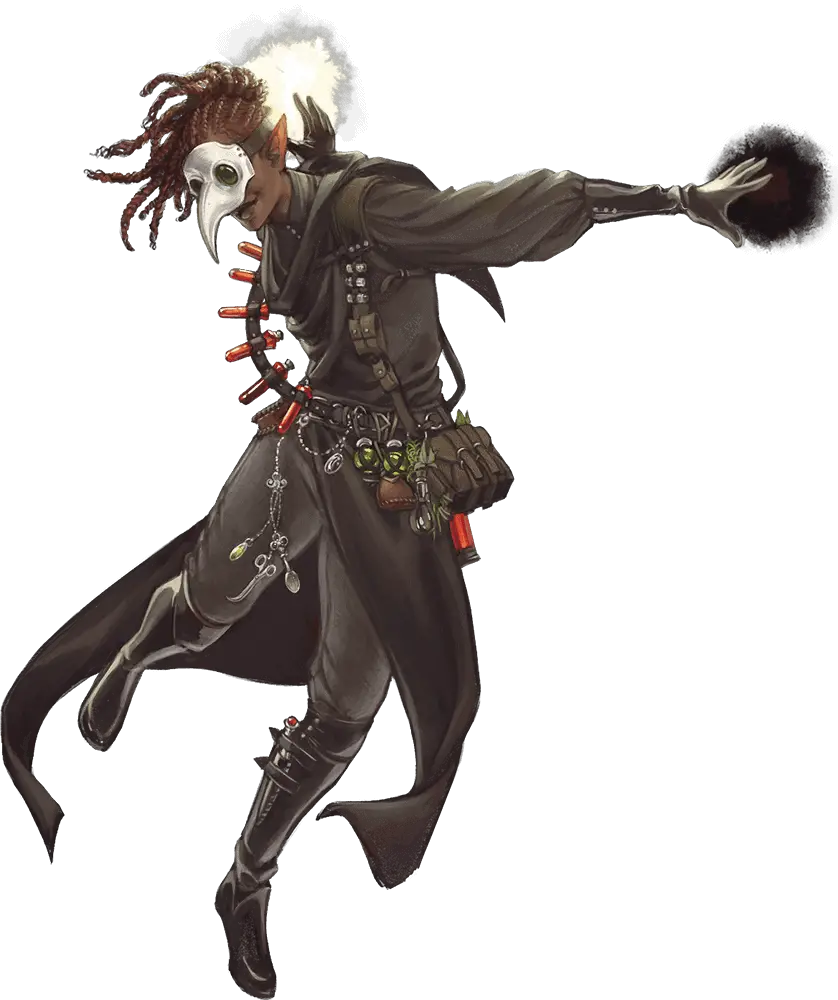
Way of Mercy
There is a theme of duality in the Way of Mercy Monk. More than just skilled warriors and martial artists, they are doctors who use their ki to control the force of life.
But as one hand heals, the other harms.
As Mercy Monks unleash a rapid series of strikes, they are able to mix in healing to their nearby allies and extra damage to their foes.
Mechanically, the Way of Mercy Monk is a mix of striking and support. Add in some of the coolest themes in D&D 5e and you’ve got a truly remarkable subclass!
- Implements of Mercy: Gain proficiency in Insight, Medicine, and Herbalism Kits. You also get a special mask which offers some fun flavor.
- Hand of Healing: Spend ki points to restore hit points based on your Martial Arts die and Wisdom score. This can be incorporated with your Flurry of Blows.
- Hand of Harm: Spend ki points to deal extra necrotic damage to your enemies based on your Martial Arts die and Wisdom score.
- Physician’s Touch: Hand of Healing now ends diseases and certain harmful conditions as well. Hand of Harm now poisons the target.
- Flurry of Healing and Harm: Hand of Healing and Hand of Harm no longer cost extra ki when used with Flurry of Blows.
- Hand of Ultimate Mercy: Spend ki to bring a creature back to life that has died within the past 24 hours.
Practice some medicine with this guide to the Way of Mercy Monk!
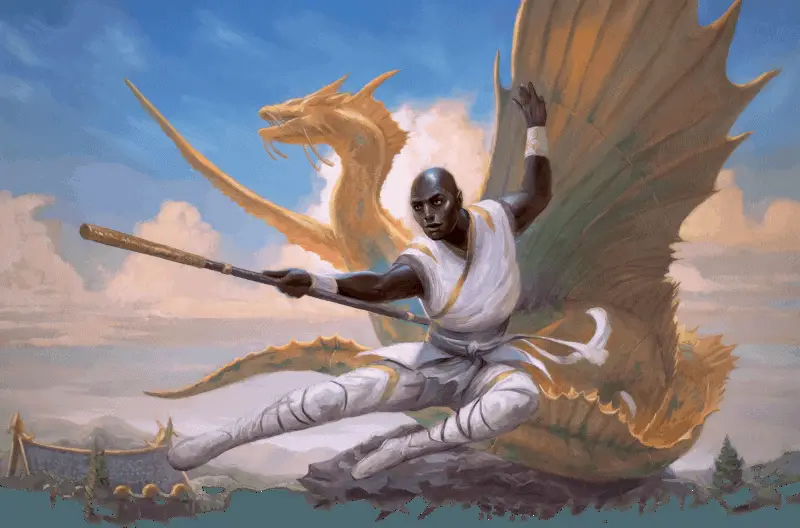
Way of the Ascendant Dragon
With intense training, Ascendant Dragon Monks seek to embody both the might and wisdom of powerful dragons.
There is a major focus on channeling dragons’ elemental abilities with the techniques taught by this Monastic Tradition.
Used wisely, these techniques can get around enemies’ resistances and even exploit certain weaknesses. Not to mention they can even give the Monk’s allies resistance to certain elements!
Additionally, being able to channel Dragons’ Breath means they’re great at dealing with groups of enemies.
- Draconic Disciple: Reroll failed Persuasion and Intimidation checks. Add elemental damage to your unarmed strikes. Also, learn to speak, read, and write Draconic. That’s a lot!
- Breath of the Dragon: Deal elemental damage of your choice in either a cone or line equal to two rolls of your Martials Arts die.
- Wings Unfurled: When you use the Step of the Wind feature from the Monk’s Martial Arts options, you grow spectral wings and gain a flying speed until the end of your turn.
- Aspect of the Wyrm: Create an aura to frighten enemies within it. Alternatively, you can create an aura that gives you and your allies resistance to the elemental damage type of your choice.
- Ascendant Aspect: Increase the size and damage of your Breath of the Dragon feature, gain 10 feet of blindsight, and make your aura deal an explosion of elemental damage to nearby enemies.
Unleash the dragon within you with this guide to the Way of the Ascendant Dragon Monk!
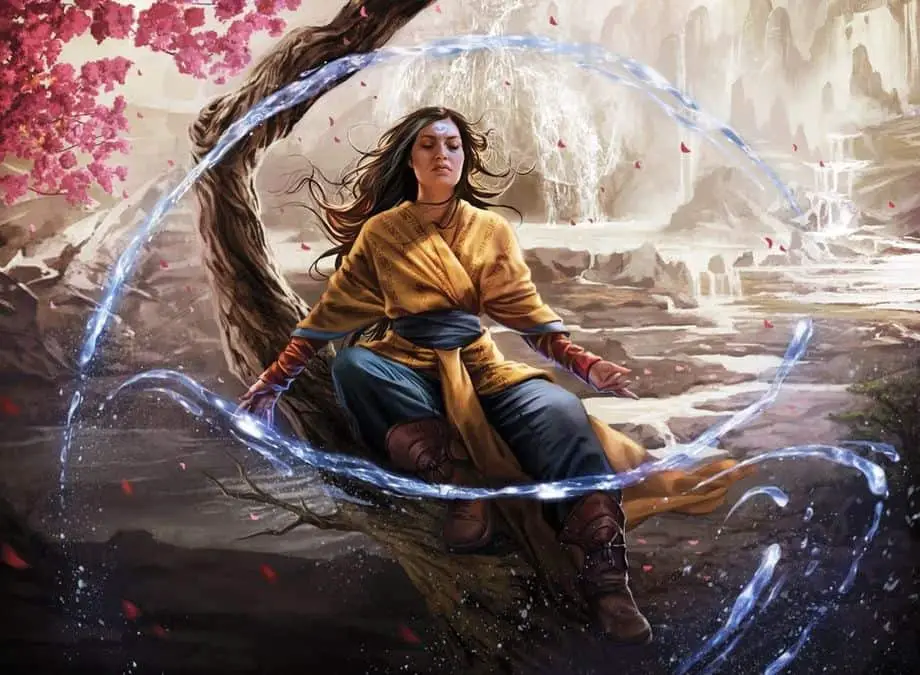
Optimization Tips for Monks in D&D 5e
We’re nearing the end of this guide, so let’s go over some optimization tips for your Monk in D&D 5e!
There is no shortage of ways to build and optimize your Monk. It all depends on what role you are filling in the party, how you want to fill that role, and what you find interesting.
These are just some tips and pointers that will help you make a character that plays well.
As a quick disclaimer, I’m not saying that this is the ONLY way to build an optimized Monk. There are endless discussions that could be had about that, but it all falls back to the same criteria that I mentioned.
Instead, I want to focus on what your primary considerations should be in the general sense.
Don’t be afraid to take these ideas and remix them to suit your specific vision for your character. At the end of the day, it is about playing the character that you want to play.
But with that said, let’s get into some quick tips to help you out!
Ability Scores for Monks in D&D 5e
We’ll take it from the top with your ability scores!
Heads up: as a Monk, you’ve got a bit of juggling to do here…
Dexterity and Wisdom are your most important ability scores as a Monk. Dexterity is necessary for your armor class and physical attacks while Wisdom powers your ki features.
Constitution is also a high priority since you’ll need to be on the front lines in combat. A high Dexterity will help you get hit less often, but a good Constitution score will help it hurt less when it does happen.
- Strength: This isn’t a primary ability for Monks, but it’s nice to have for better Strength saves and Athletics checks. I wouldn’t dump this, but don’t make it a priority.
- Dexterity: Incredibly important for Monks. Land and dodge attacks more often while also doing better with important skills like Acrobatics and Stealth.
- Constitution: More Constitution means more hit points. As a front liner, you’re going to be getting attacked more often. But you’re still squishier with a d8 hit dice, so you’ll want to make sure you don’t neglect this.
- Intelligence: A strong candidate for your dump stat. You’re already juggling Dex, Wis, and Con, so leave “knowing things” to other party members in most cases.
- Wisdom: This ability powers many of your features while also boosting your Armor Class. It also raises the DC for important features like Stunning Strike. Plus, useful skills like Perception and Insight rely on this. A top priority alongside Dexterity and Constitution.
- Charisma: Let your friends or fists do the talking and don’t bother with Charisma.
I’d recommend prioritizing Dexterity. From there, it’s a toss-up between Wisdom and Constitution. For my Monk characters, I usually make Wisdom my second highest skill for the AC bonus and Stunning Strike save DC.
Also Check Out: 5 Ways to Determine Ability Scores in D&D 5e
Best Races for Monks in D&D 5e
Tasha’s Cauldron of Everything introduced optional new rules that remove how your chosen character race affects your ability scores. However, not all groups use that rule.
If you are looking to optimize your Monk and are not using the Custom Origin rules from TCoE, these are some of the more optimized choices for your Monk.
Rather than making an exhaustive list of every single race, these are just a few standouts. Feel free to add more suggestions in the comments!
Once again, though, don’t hesitate to try something outside this list. You may be surprised!
- Aarakocra: Dexterity and Wisdom bonuses are exactly what you’re looking for as a Monk. But the real draw here is being able to fly. You’ll have no trouble outmaneuvering enemies, especially as you gain even more movement speed from the Unarmored Movement feature.
- Hill Dwarf: The extra +1 Wisdom is nice, but I mostly like the +2 Constitution in addition to the Dwarven Toughness feature. It’s a great and easy way to boost your maximum hit points.
- Half-Elf: The two +1 ability score bonuses are handy considering that Monks have to juggle multiple ability scores. Gaining two extra skill proficiencies also widens what your Monk is capable of beyond combat.
- Tabaxi: Especially useful for Monks who are more geared towards being the party’s scout. The Dexterity bonus is naturally great, but the extra climb speed and ability to double your speed for a round with Feline Agility make for a truly impressive (and hilariously fast) Monk.
- Variant Human: Variant Humans are so adaptable that they can pretty much do anything. Getting that extra starting feat is incredibly enticing and lets you pick up some powerful additions to your Monk’s kit right from the start. Throwing in two +1 increases and a skill proficiency makes this a strong option.
- Wood Elf: The Wisdom bonus, bow proficiencies, and extra movement speed are handy to have. Mask of the Wild is especially great for Shadow Monks.
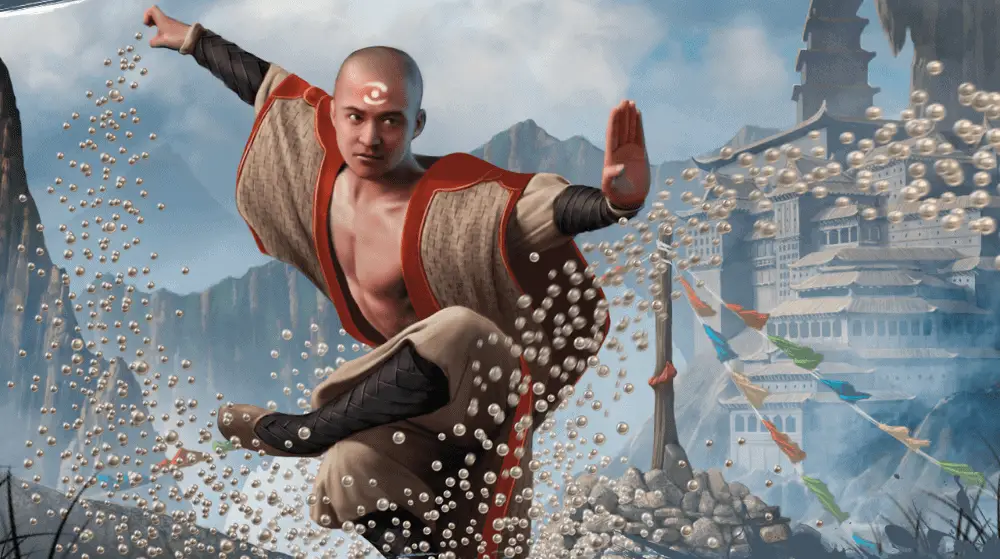
Best Backgrounds for Monks in D&D 5e
Monks come from many different backgrounds and there aren’t many bad choices.
However, there are some that stand out from the rest! Preference is given here to those that play to the Monk’s skills and features as well as giving you some extra skills to better help your role.
- Criminal/Spy: If you favor a stealthy approach, this is a great background. Stealth and Thieves Tools proficiencies are beneficial, especially if your party doesn’t have a Rogue.
- Folk Hero: Animal Handling and Survival play to your Wisdom score. Artisan’s tools proficiency is handy if you’re wanting to be crafty in your downtime. This works especially well if you’re also working as a navigator for the party.
- Far Traveler: Insight and Perception are great skills to gain proficiency in. This also perfectly fits the “wandering monk” theme if that’s what you’re going for.
- Hermit: This greatly fits the theme of the typical Monk who has spent their life in a monastery. Medicine skill proficiency is handy while the herbalism kit can be useful for making potions in your downtime.
- Urchin: I like this for all the same reasons as the Criminal/Spy background and more. Urchins also gain proficiency in Stealth and Thieves Tools, but also get Sleight of Hand and Disguise Kit proficiency.
Best Feats for Monks in D&D 5e
Finally, let’s look at some feats that are worth looking at for any Monk.
Generally speaking, you will want to prioritize boosting your ability scores more than anything. Having to spread your attention between Dexterity, Wisdom, and Constitution can leave you a bit thin.
But sometimes you’ll need to pick up a feat earlier if you’re trying to build your character towards a specific concept or if you’ve chosen to play a Variant Human.
- Crusher: Small buff to Constitution is handy but being able to knock enemies back with your attacks without spending ki or using your action to shove them can be great. With as many attacks as Monks can make, you’re more likely to get critical hits that give attacks against the creature advantage until the start of your next turn.
- Fey Touched: Small buff to Wisdom is nice. Misty Step is great for moments where your movement isn’t quite enough. Take Hex as your chosen spell to greatly increase your damage against the target and lock them down.
- Sentinel: Keep enemies locked down and stop them from fleeing. Useful for all Monks but especially Shadow Monks who don’t want their target to get away and sound the alarm.
- Skill Expert: Add the +1 to one of your most important ability scores. Gain a skill proficiency that will most benefit you and the party. Gain expertise in your most important skill to double the proficiency bonus. This is best chosen if your party doesn’t have a Rogue or Bard.
- Tough: Monks belong on the front lines but have fewer hit points than other frontline classes. This feat greatly helps with that problem.
Related: Feats in D&D 5e Explained
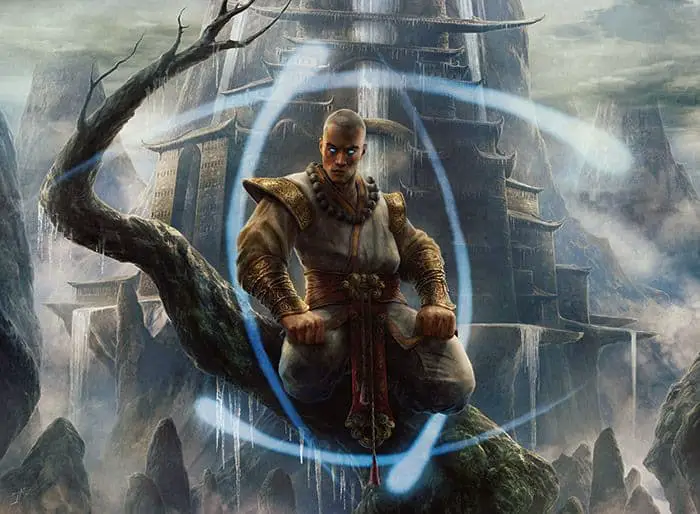
Conclusion – The Complete Guide to the Monk Class in D&D 5e
I don’t know about you, but I’ve always had a huge love of kung fu movies. Growing up, it’s hard to say how many hours I spent watching movies starring Bruce Lee and Jackie Chan.
Playing as a Monk in D&D 5e gives an opportunity to get the best of both worlds!
Whether you want to evoke the quick-hitting fighting style of Enter the Dragon, the mystical superhuman feats of Crouching Tiger, Hidden Dragon, or something entirely different, Monks can do it!
Not only are Monks an exciting class to play mechanically, but they do a lot to add more drama and style to your combats.
Don’t be afraid to go over the top with your combat descriptions. As evidenced by the movies that have popularized these types of characters, it’s freaking cool!
But anyways…
I hope that you’ve found this complete guide to the Monk in D&D 5e helpful. These full class guides are always HUGE, but I do enjoy writing them.
If you have any questions or thoughts regarding Monks in D&D 5e, reach out in the comments!
Also…
Be sure to sign up for the Tabletop Joab newsletter below if you haven’t done so yet! It’s the best way to get all the latest player guides, DM tips, reviews, news, and more for D&D 5e!
You can also follow me on Facebook and Twitter.
If you found this article helpful and want to support the site, you can buy me a coffee here! (It’s not expected, but very appreciated!)

